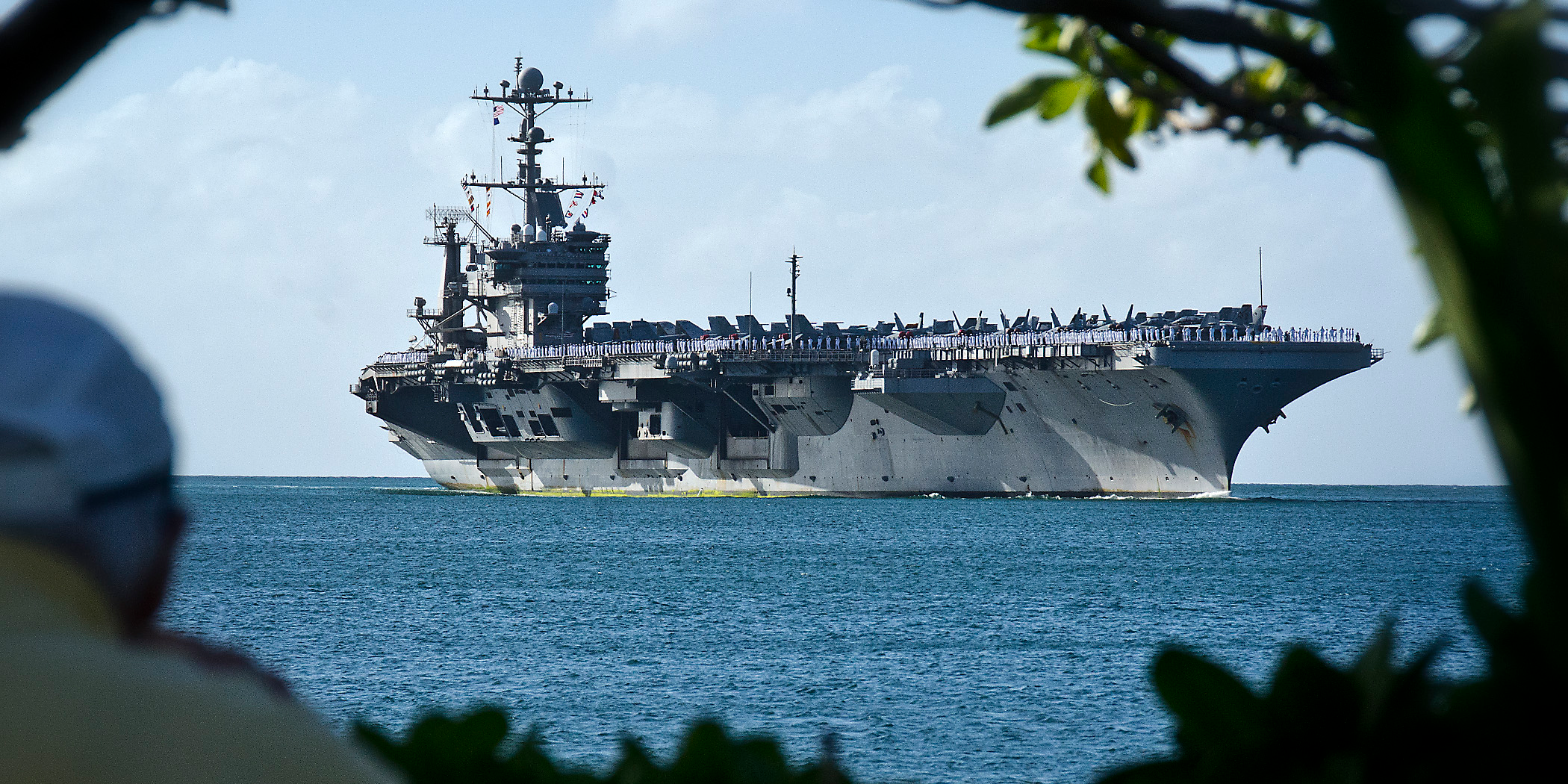- The US Navy has shed light on a previously secret project to protect aircraft carriers from the grave and widespread threat of torpedoes, and it’s been a massive failure.
- The Navy abandoned a program to detect and kill incoming torpedoes in the water after it failed to make progress in testing, leaving its most powerful ships highly vulnerable.
- The anti-torpedo systems in place will now be removed at a time when US carriers are losing simulated battles to even older, diesel-powered electric submarines, and China’s military is openly discussing sinking carriers to defeat the US.
- The US spent $760 million on the system to save US ships, and now it looks like even old North Korean subs could have a chance at a kill shot on the US’s carrier fleet.
The US Navy has shed light on a previously highly classified project meant to protect aircraft carriers from the grave and widespread threat of torpedoes, and it’s been a massive failure.
Virtually every navy the US might find itself at war against can field torpedoes, or underwater self-propelled bombs that have been sinking warships for more than 100 years.
US Navy aircraft carriers represent technological marvels, as they’re floating airports powered by nuclear reactors. But after years of secretive tests, the US has given up on a program to protect the ships against torpedoes.
The US Navy has canceled its anti-torpedo torpedo-defense system and will remove the systems from the five aircraft carriers that have them installed, the Pentagon’s Office of the Director of Test and Evaluation said in a report on Tuesday.
"In September 2018, the Navy suspended its efforts to develop the [surface ship torpedo defense] system. The Navy plans to restore all carriers to their normal configurations during maintenance availabilities" over the next four years, the report said.

Essentially, the report said that over five years the program made some progress in finding and knocking down incoming torpedoes, but not enough. Data on the reliability of the systems remains either too thin or nonexistent.
This leaves the US Navy's surface ships with almost no defense against a submarine's primary anti-surface weapon at a time when the service says that Russia's and China's submarine fleets have rapidly grown to pose a major threat to US ships.
The US ignored the threat of torpedoes, and now anyone with half a navy has a shot

At the end of the Cold War, the US turned away from anti-submarine warfare toward a fight against surface ships. But now, Russia, China, and Iran reportedly have supercavitating torpedoes, or torpedoes that form a bubble of air around themselves as they jet through the water at hundreds of miles per hour.
The new class of speedy torpedoes can't be guided, but can fire straight toward US Navy carriers that have little chance of detecting them.
Torpedoes don't directly collide with a ship, but rather use an explosion to create an air bubble under the ship to bend or break the keel, sinking the ship.
Other Russian torpedoes have a range of 12 miles and can zigzag to beat countermeasures when closing in on a ship.
In a combat exercise off the coast of Florida in 2015, a small French nuclear submarine, the Saphir, snuck through multiple rings of carrier-strike-group defenses and scored a simulated kill on the USS Theodore Roosevelt and half its escort ships, Reuters reported. Other US naval exercises have seen even old-fashioned, diesel-electric submarines sinking carriers.

Even unsophisticated foes such as North Korea and Iran can field diesel-electric submarines and hide them in the noisy littoral waters along key US Navy transit routes.
The US has spent $760 million on the failed system, The Drive reported.
The US Navy can deploy "nixies" or noise-making decoys that the ship drags behind it to attract torpedoes, but it must detect the incoming torpedoes first.
A US Navy carrier at 30 knots runs just 10 knots slower than a standard torpedo, but with a flight deck full of aircraft and personnel, pulling tight turns to dodge an incoming torpedo presents problems of its own.

